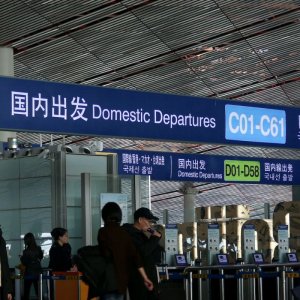
Mexico’s Religious Tourism Hit by COVID-19
 By Cas Biekmann | Journalist and Industry Analyst -
Mon, 04/13/2020 - 14:50
By Cas Biekmann | Journalist and Industry Analyst -
Mon, 04/13/2020 - 14:50
An often-overlooked part of the travel industry is religious tourism, which is a vital source of income for Mexico. The World Tourism Organization estimated that around 300 million people travel for religious motives per year. Mexico receives 35 million of these travelers. With COVID-19 negatively impacting the industry, religious sites have felt the lack of visitors equally. Mexico’s Holy Week is especially important in attracting visitors. Nevertheless, religious sites remained practically empty.
In Mexico City, for instance, millions flock to the Basilica of Our Lady of Guadalupe. The story goes that the Virgin Mary, immensely important for the Catholic population in Mexico, appeared to an indigenous man named Juan Diego in 1531. This happened merely a few steps away from where the current basilica is located. The anniversary of the apparition is celebrated mid-December every year, meaning that this particular milestone might still go undisturbed in 2020. Nonetheless, millions visit the Basilica throughout the year.
Other locations that normally receive a large number of religious tourists include the Santuario de Plateros (the Silversmith’s Sanctuary) in Fresnillo, Zacatecas, where a small image of the Holy Infant of Atocha is venerated. It ranks third in terms of yearly visitors, behind the Basilica of Our Lady of Guadalupe and San Juan de Los Lagos. Normally, over 1 million people visit the sanctuary per year. Now, it stands pretty much empty.
New concepts such as a digital tour of the Via Dolorosa in Jerusalem are attracting attention. Another example of this is Iztapalapa’s yearly Passion Play. The play includes hundreds of actors and inspires thousands of ‘nazarenes’ carrying their own crosses to follow the main actor portraying Jesus Christ on his path. El Universal cited that the play usually attracts between 2.5 million and 4 million visitors, but this year access was restricted and people could instead follow it on television or via streaming. Although this keeps the tradition alive, local vendors are unlikely to benefit if physical visitors are not present.
Specialist in tourism and mobility, Daniel Madariaga, said in an interview with El Economista that he predicted it was possible for Mexico’s tourism sector to recover by the time the summer vacation starts. Nonetheless, this will depend on the planning and protection measures implemented by the government.
















